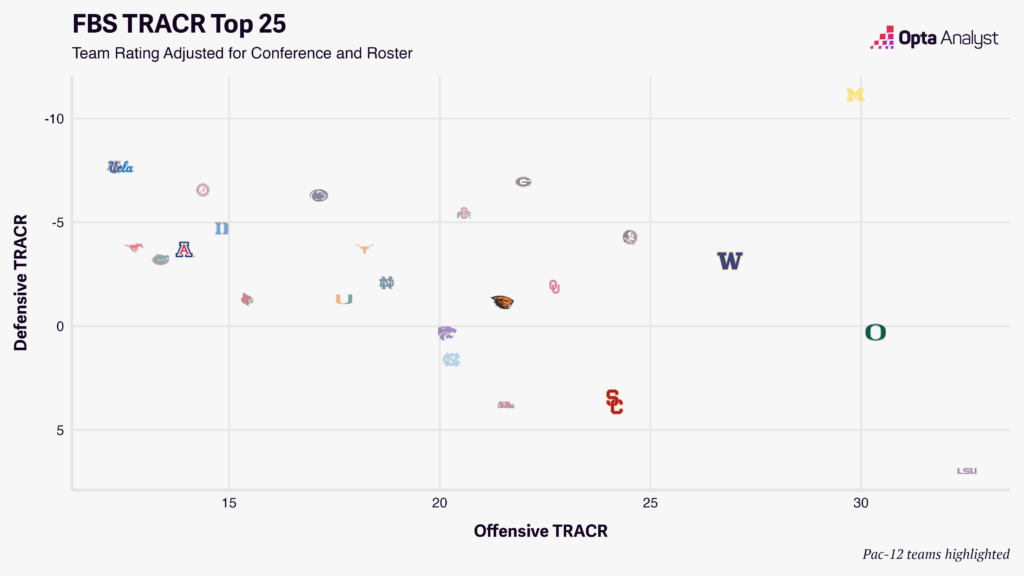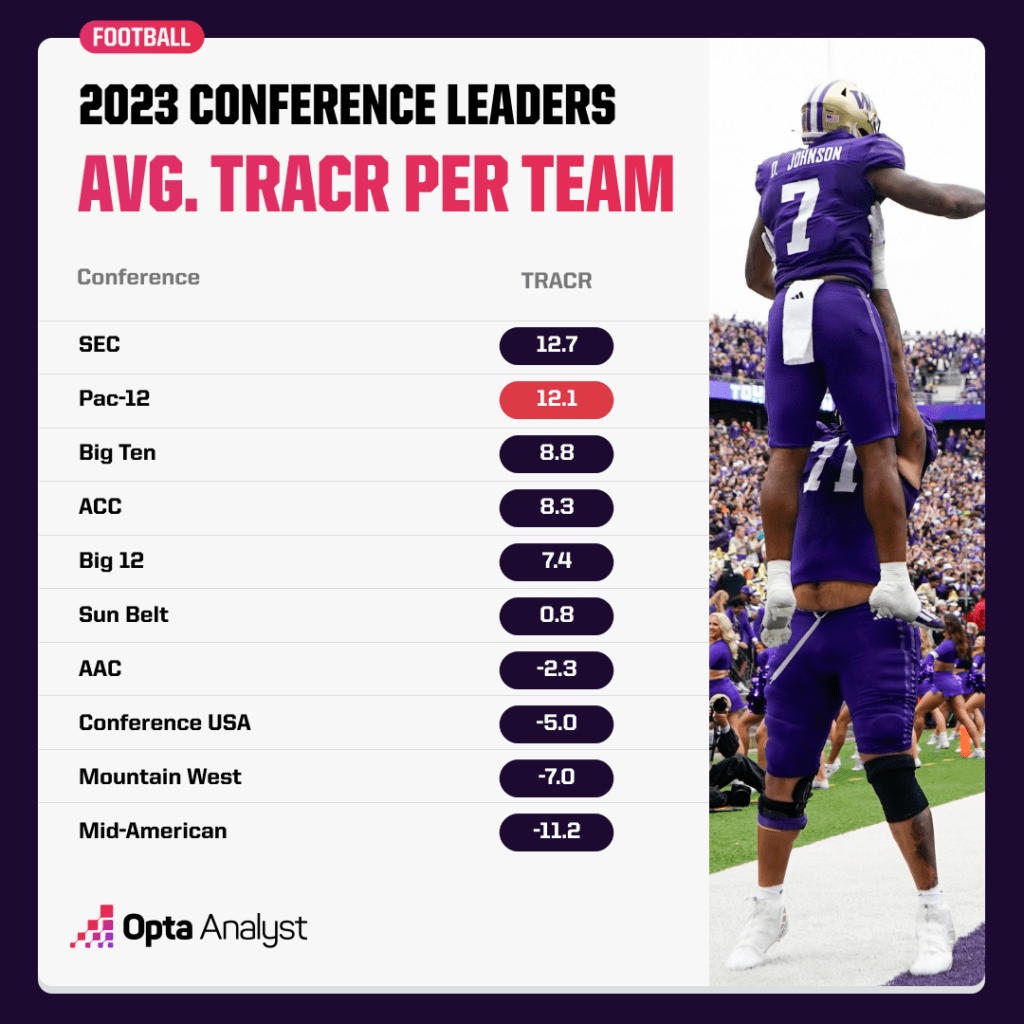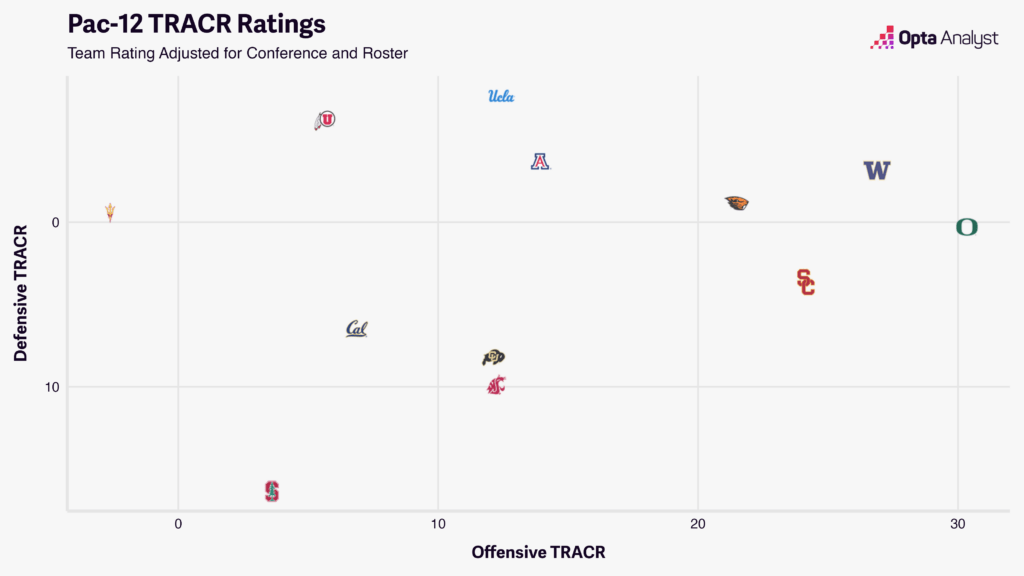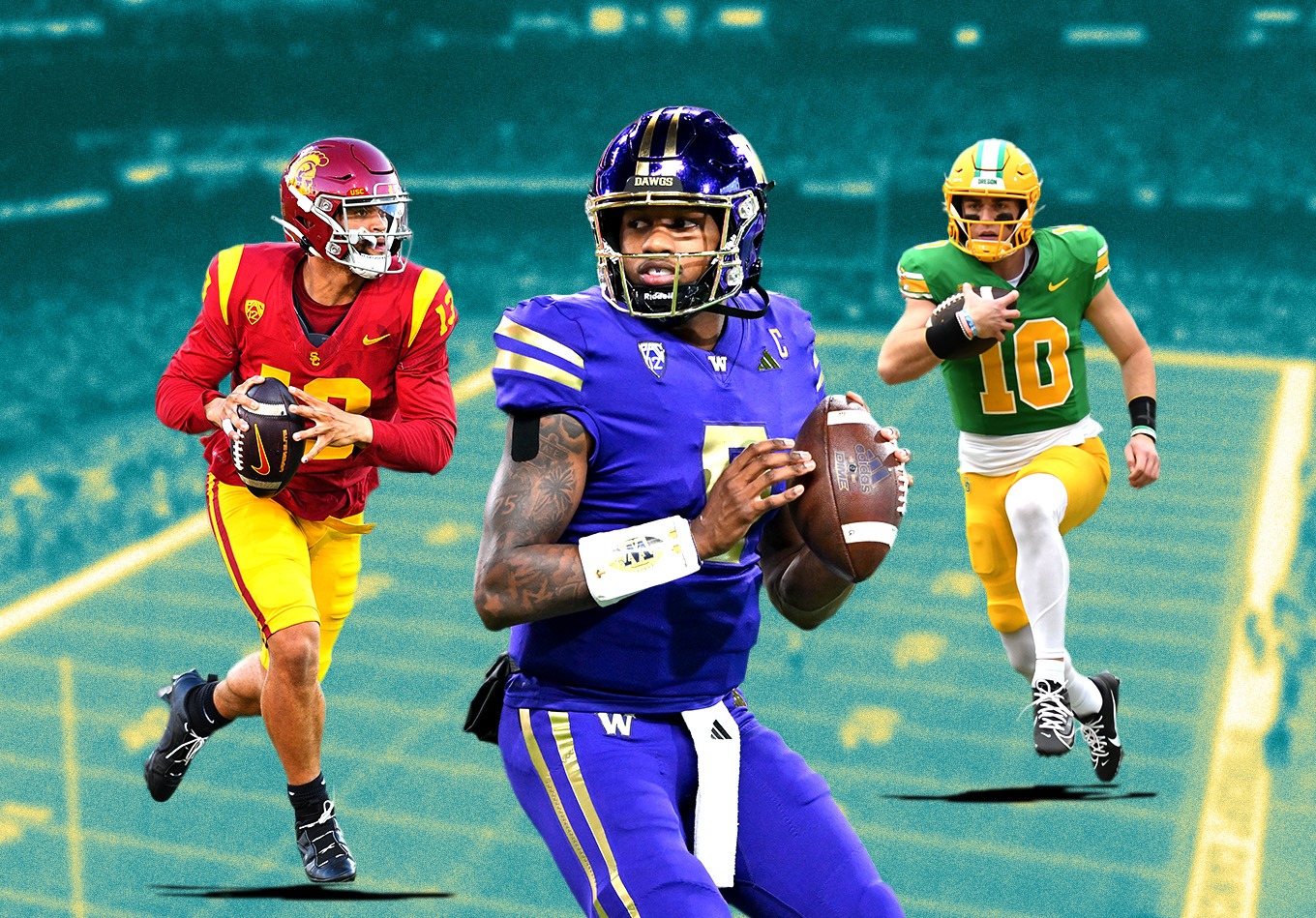After more than a century of being the NCAA’s premier collegiate athletics conference on the West Coast, the Pac-12, as we know it, is coming to an end.
UCLA, USC, Washington and Oregon will be joining the Big Ten next season. Arizona, Arizona State, Utah and Colorado (again) will be heading to the Big 12. Cal and Stanford will join the ACC, even though it literally has “Atlantic” in its name.
Oregon State’s and Washington State’s fates remain uncertain, though an alliance with the Mountain West has been heavily rumored.
As such, this fall is “The Last Dance” for Pac-12 football and many of the regional rivalries that have come from it. This much, we already knew entering the season.
What we didn’t know was that the conference’s last ride could be the best one yet.
From the opening kickoff, the Pac-12 conference has been making headlines with a thorough display of impressive nonconference wins. In Week 1 alone, Utah handily beat Florida on national television, Colorado took down defending national finalist TCU in a touchdown fest in Deion Sanders’ debut, and Washington destroyed a perennially strong Boise State program by 37 points.
This led to the Pac-12 becoming the first conference since at least 1980 to collectively win its first 13 games.
While the perfect record has since come to an end, other quality nonconference showings have included Washington State upsetting Wisconsin, Utah defeating Baylor, Oregon edging Texas Tech, Colorado dominating Nebraska, Washington blowing out Michigan State, and more.
The polls have taken notice. After both Weeks 2 and 3, the Pac-12 had a staggering eight teams in the AP Top 25: Washington, Oregon, Utah, Oregon State, UCLA, USC, Washington State and Colorado.
Not only did that comfortably set the conference’s record for ranked teams (which previously was six, done on several occasions), but as a matter of fact, the Pac-12 joined the SEC as the only conferences in the history of the poll to have eight ranked teams at once (something the SEC, naturally, has done 21 times).
The Washington State Cougars and the Colorado Buffaloes have since cooled off, but the other six aforementioned schools remain ranked. And that sextet is as good as any nationwide. No conference has more ranked teams than the Pac-12, with the SEC being the only one to match that total of six.
Interestingly, the “Conference of Champions” was similarly prevalent in the polls last year, though not with as much public fanfare (perhaps because we didn’t yet know of the group’s impending collapse). The same six Pac-12 teams that are currently ranked were also in the AP Top 25 at the end of last bowl season.
At the time, this tied the Pac-12’s all-time record for most ranked schools, and it was also tied with the SEC for the most ranked teams to finish 2022 (twice as many as any other conference).
Human polls can only go so far though. When all is said and done, no one has watched every snap of every team nationwide, and no voter is completely immune to implicit bias. To account for this, we can dive into our TRACR rankings.
TRACR (Team Rating Adjusted for Conference and Roster) is an all-encompassing metric that accounts for how good a team is on a play-to-play basis, relative to the opponents it plays. A rating of zero is considered to be the FBS average, and the gap between any two teams’ ratings is the expected score differential if those teams played at a neutral site (e.g., if Team A’s TRACR was 14.5, and Team B’s was 11.5, we’d expect Team A to beat Team B by three points).
And when we take a glance at the 2023 TRACR rankings, we get a further sense of just how strong this year’s Pac-12 is. Five of the nation’s top 15 teams in TRACR hail from the Pac-12: Oregon, Washington, Oregon State, USC and UCLA. That’s two more such teams than any other conference, with both the SEC (Georgia, LSU, Alabama) and Big Ten (Michigan, Ohio State, Penn State) ranking tied for second most.

And for good measure, the Pac-12 is also the only conference with two of the top five, with the No. 2 Oregon Ducks and No. 3 Washington Huskies ranking behind only Michigan.
If we look at the entire conference rather than just the top few teams, we arrive at a similar conclusion. The Pac-12’s mean TRACR rating is 12.1, which is a hair behind the SEC’s 12.7 for tops in the nation. This means that the theoretical “average” SEC team would beat the “average” Pac-12 team by 0.6 points at a neutral site, according to our projections.
Those two conferences are handily above any other in mean TRACR rating, as shown below.

The SEC still slightly reigns supreme, as has been the case for much of college football history, but the Pac-12 is nipping on its heels.
If the Pac-12 is this talented, is it a lock that the conference will feature a CFP participant for the first time since 2016 – something that every other Power 5 conference (and the AAC) has already done at least once in the 2020s?
Not exactly. The top-to-bottom strength of the Pac-12 might again lead to the same ailment that has plagued the conference’s playoff hopes over the past half-decade: everyone keeps beating everyone else up.
In recent years, the conference has objectively not had a juggernaut like Alabama and Clemson in the mid-late 2010s, or Georgia since 2021. After all, no Pac-12 team has won a national championship since the Matt Leinart and Reggie Bush-led USC squad in 2004.
But what the conference has lacked in true “top-of-the-nation” caliber talent, it has made up for with its extreme balance. The sport is at its best when anybody can beat anybody on any given day, and the Pac-12 has exemplified this at a level the likes of which hasn’t been seen anywhere else at the top level of college football.
Since 2017, there has not been a single Pac-12 team to enter bowl season with fewer than two losses (minimum 10 games played, helping neutralize the 2020 season). Just how unconventional is this? Over that seemingly short span, every other Power 5 conference has had at least four such teams (SEC has eight, Big Ten has six, ACC has five, Big 12 has four).
If we want to look at just conference losses rather than overall ones, we get the same picture. Remarkably, the Pac-12 hasn’t had a team finish the regular season undefeated in conference games (minimum six such games) since Oregon did so way back in 2010 when it was a 10-team conference.
In contrast, since 2011, the SEC, ACC and Big Ten have all had at least seven teams finish the regular season unbeaten in conference play (min. six games). The Big 12 has actually been closer to the Pac-12 in this regard, with Oklahoma in 2016 and TCU in 2022 being the only instances – and TCU proceeded to lose the Big 12 Championship to Kansas State, which, while not technically a conference game, was against a fellow Big 12 member.
Transitioning back to 2023, this year’s Pac-12 is shaping up to be as much of a dogfight as any. To this point, Washington and Oregon have been the top two teams in the conference, with Washington standing as the lone unbeaten squad and Oregon’s lone loss coming in a 36-33 contest in Seattle – perhaps the game of the year in college football so far. But with a deep tier of very strong teams right behind them, anything has been possible.

Consider this cycle: Washington State lost to the UCLA Bruins, who lost to Utah, which lost to the Oregon State Beavers, who lost to Washington State – and all of that somehow managed to happen by the first weekend of October. In the time since then, Washington State was beaten by Arizona, which had previously lost to reigning Heisman Trophy winner Caleb Williams and the USC Trojans, who lost last week to the Utah Utes … and soon enough, you’ll start to feel like Charlie from “It’s Always Sunny in Philadelphia” if you try to chart out all the paths of who has beaten whom.
Even the conference’s lone unbeaten has been far from dominant in conference play, as Washington was taken to the wire by an Arizona State Sun Devils team with no FBS wins last week, needing a fourth-quarter Pick 6 to take the lead for the first time.
As it pertains to the playoff race, it’s unclear what this unparalleled balance will mean for the conference. According to our playoff potential rating, Washington (98.3) and Oregon (96.5) score in the 90-or-above range, making them serious College Football Playoff candidates. Oregon State is next at 45.4, meaning it will likely have two or three losses and wouldn’t make it unless there was total chaos (i.e. every team ahead of them somehow losing out).
The overall list of playoff contenders is as deep as ever this season, with every Power 5 conference still holding at least one unbeaten team, meaning it very well could be necessary for a Pac-12 team to finish undefeated to snap the conference’s playoff drought.
But what is clear is very simple. This “Last Dance” features as much talent, depth and offensive aptitude as the Pac-12 has ever seen, and we should all enjoy the ride before it comes to an end for good.
Check out our NFL and college football season predictions. And don’t forget to follow us on X and Instagram.
